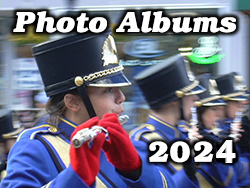Research by Walter E. Boright, Ed. D., historian, and Historic Signs, Inc.

Historian and author Walter E. Boright, Ed.D.
The New Orange Industrial Association planned in 1894 to develop farms in parts of Union and Cranford as New Orange. Kenilworth was created from that land in 1907.
Among the plans for New Orange were a railroad, factories, a trolley line, a college, and more. The New York and New Orange Railroad, years later known as the Rahway Valley Railroad (RVRR), was incorporated in 1897. Tracks soon were laid from the Central Railroad of NJ in Roselle Park to a terminus north of the Boulevard near today’s Parkway Liquor store. Timber from local woodlands were hewn into railroad ties by workers from the immediate area. A Queen Anne style passenger and freight station was constructed within a year at that site. By 1905 the tiny rail line extended north to Springfield and to Summit. It had a branch going into Union and a local spur north of and parallel to Monroe Ave and extending to North 7th St.
The station had a colorful history. In addition to residents using the station to get in and out of town, thousands of people passed through it to picnic on the many hills that once adorned Kenilworth, to stop and disembark on foot or by buggy to the waters of the Rahway River for bathing and swimming. as a pass-through to golf at the Baltusrol Golf Club in Springfield, or to attend Upsala College, once located off North Michigan Ave. Its most glorious use was as a setting for many silent movies, which were filmed here right into the 1920s. A 1974 fire virtually destroyed the station. Its demolition in 1979 ended desires to restore it as a part of Kenilworth history. The railroad itself ceased to operate in 1992. Tracks later were torn up and the rights-of-way sold.
Persons with inquiries about this or other aspects of Kenilworth history may contact Dr. Boright at drbori@aol.com or 908-256-5200.

(above) Engine #3 pulling into RVRR Station, 1905-1906, courtesy of the Kenilworth Historical Society.





